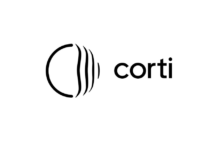The rapid acceleration of cloud adoption in healthcare is due to its benefits, such as enhanced decision-making, improved efficiency and agility, reduced costs, better data security and privacy, better analytics and reporting, and streamlined processes.
The healthcare cloud computing market is growing rapidly and is expected to exceed $62 billion by 2030. As cloud-based solutions become more prevalent in healthcare, they are transforming clinical, finance, HR, and supply chain operations. According to a recent survey of hospital and health system leaders, 45% of respondents already use cloud-based supply chain management technologies. By 2026, it’s expected that 70% of hospitals will have gone through cloud migration and adopted a cloud-based approach to supply chain management.
Healthcare’s Race to the Cloud
The rapid acceleration of cloud adoption in healthcare is due to its benefits, such as enhanced decision-making, improved efficiency and agility, reduced costs, better data security and privacy, better analytics and reporting, and streamlined processes. For providers, the cloud can improve procure-to-pay processes, providing real-time access to data and reducing the need for manual intervention.
For example, when El Camino Health switched to a cloud-based solution, the company eliminated 15 paper processes, including hundreds of paper requisitions processed every other week. Lurie Children’s Hospital has also benefited from transitioning to the cloud. Since its migration, the organization has doubled the number of trading partners, improved visibility into its backorders threefold, and achieved an 8% drop in price exceptions. For suppliers, automating order-to-cash processes helps prevent issues from the moment an order arrives through final payment.
The cloud also offers greater scalability and lower maintenance costs for providers with aging IT infrastructures and limited budgets. This frees up resources for more advanced projects, such as system integrations inside and outside the organization. This is particularly helpful as more healthcare organizations look to mergers to accelerate their business transformations. The cloud can ease the integration of multiple systems, standardize a myriad of processes, like product requests and orders, and connect disparate clinical, financial, and operational systems, including EHRs and ERPs.
Despite its evident benefits and a clear trend toward cloud migration across the industry, some healthcare organizations have delayed or modified their cloud timelines. Many are intimidated by the overall complexity of the migration process, the difficulty of building or maintaining cloud infrastructure, or the necessity of integrating niche solutions. The reality is that few cloud migrations are truly headache-free, especially in healthcare, where data has historically been siloed across systems and departments. A sound, modern data strategy is crucial to overcoming these challenges.
A sound data strategy is a cornerstone of success.
Data lies at the heart of every digital transformation, regardless of industry. Whether you’re just starting out or well into the process, it’s crucial to ensure that your organization has a modern data strategy that incorporates clean, accurate data and enables seamless integration across systems. A modern data strategy has four pillars:
Data Platform: Investing in a data platform with real-time streaming for seamless data ingress and egress is crucial to timely analytics and decision-making.
Data Maturity: In healthcare, data is often fragmented, redundant, and outdated. To understand business performance and patient outcomes comprehensively, it’s essential to improve data integrity and quality around core entities, including patients, products, providers, suppliers, procedures, and facilities. Establishing ways to measure the fill rate of key data attributes and the match rate of duplicate entities is vital to establishing data maturity and building out a strong mastery of data management practices.
Governance: After defining their data, organizations should establish a data governance program to maintain the quality and integrity of that data. In healthcare, a single entity, such as a procedure and its related procedure codes, is relevant to multiple stakeholders. To prevent confusion, establish a dedicated team to oversee data governance and determine who can access and utilize data assets. This team should also define a set of guiding principles aligned with the organization’s goals to streamline decision-making as requests and situations arise, including who can access and utilize data assets.
Security: It is critical to protect healthcare data since it often contains personal and private patient information. By incorporating security measures into a modern data architecture, organizations can balance data access for multiple stakeholders while prioritizing security and data rights. In addition to network security and other aspects of a mature security program, several other critical factors must be considered. This includes maintaining the original data’s immutability, establishing role-based access control to data as it moves through an organization’s data pipeline, and documenting any changes made to the data during transformation.
Additional Keys to Success and Pitfalls to Avoid
To ensure a successful transition to the cloud, it’s crucial to not only establish a solid data foundation but also streamline existing processes. Some businesses have used the same processes for years, but moving to the cloud requires change. Therefore, identifying and optimizing areas such as requisitions, item data management, and accounts receivable is essential to achieving maximum efficiency.
On the flip side, avoid the common mistake of not having a stringent enough process for determining which aspects should be centralized and which should be decentralized. Finding a balance between the two is crucial, as certain aspects should be centralized while others should be decentralized. Organizations must explore ways of making high-quality data more easily accessible throughout the organization in an agile manner. Having the right technical and organizational strategy in place will prevent the data from being locked up in a single location that is difficult to access.
Choose Experts in Healthcare Data
When preparing for the transition to cloud-based systems, organizations should carefully consider their choice of partner to achieve maximum benefits. It’s essential to look for a partner who has expertise in healthcare data and can provide a broad range of supply chain management capabilities, including automation tools, analytics and reporting, supplier/supply chain risk analytics tools, demand forecasting tools, value analysis and strategic sourcing tools, and integrated business planning.
The path forward
Cloud migration is already underway in healthcare and continues to accelerate rapidly. Given how intensely the industry is relying on these investments to improve efficiency, drive revenue growth, and facilitate innovations that will allow it to thrive, organizations must push to keep these initiatives on track. Despite the work that the shift to the cloud requires, now is the time to fully embrace the cloud to ensure future success. Solid collaboration across teams and a sound data strategy are the building blocks to successfully migrating to the cloud.
Also read: Navigating the Cybersecurity Labyrinth: A Strategic Blueprint for CIOs
Do Follow: CIO News LinkedIn Account | CIO News Facebook | CIO News Youtube | CIO News Twitter
About us:
CIO News, a proprietary of Mercadeo, produces award-winning content and resources for IT leaders across any industry through print articles and recorded video interviews on topics in the technology sector such as Digital Transformation, Artificial Intelligence (AI), Machine Learning (ML), Cloud, Robotics, Cyber-security, Data, Analytics, SOC, SASE, among other technology topics.






